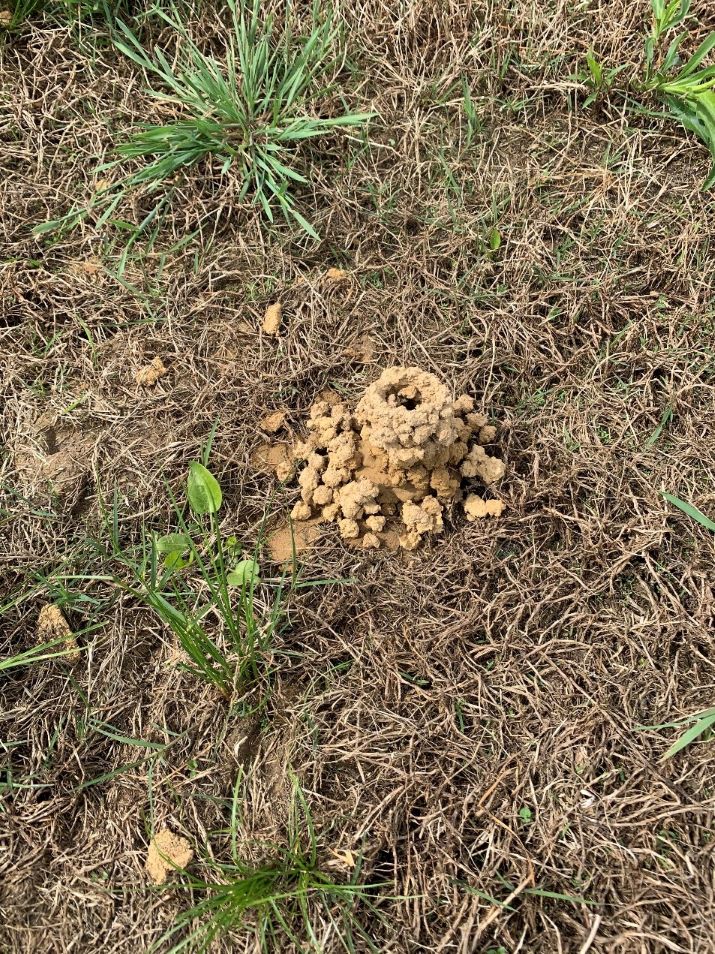Crayfish Chimneys in Your Yard
Searcy, Ark. –
Each spring—especially after a wet winter or rainy spring—I start hearing from Arkansas homeowners about strange mounds of soil appearing in their yards. These are known as crayfish chimneys, and they’re created by burrowing crayfish pushing soil to the surface as they dig tunnels.
Crayfish are naturally drawn to saturated soil conditions. In Arkansas, this means they’re most commonly found in low-lying yards, near ditches or creeks, or in areas with heavy, slow-draining clay soils. They’re especially active in regions with high water tables, or where overwatering or excessive rainfall has left the soil soggy.
The calls I get usually aren’t about plant damage—crayfish aren’t eating your lawn or garden. Instead, it’s about the look of the chimneys and the problems they cause for lawnmowers. These mud towers can dull or even damage mower blades, and they make a yard look messy.
While crayfish can sometimes nibble on roots or plants, they’re primarily scavengers. They feed on decaying organic matter and small insects, not your grass or garden. So, from a horticultural standpoint, the concern is mostly cosmetic, not a threat to your plants.
What Can You Do in Arkansas Conditions?
Unfortunately, there’s no quick fix. No repellents or pesticides are legally approved for crayfish control in lawns. And homemade chemical remedies can do more harm than good—damaging your grass, harming wildlife, or contaminating nearby water sources like ditches, creeks, or ponds.
Your best bet is to improve your yard’s drainage. Crayfish need constant soil moisture near the surface to survive. By encouraging better runoff and lowering the water table—where possible—you can make your lawn less appealing to them. Some options include:
- Aerating compacted clay soil to improve infiltration
- Redirecting downspouts away from soggy areas
- Creating swales or using French drains to guide excess water away
- Adjusting irrigation schedules to avoid overwatering
In normal years, these strategies can help. But in wet years—like those we often get in the Delta, Ozarks, or River Valley regions—nature has the upper hand. It may not be possible to dry out the ground until the rains stop and temperatures rise.
The good news? As the soil dries out, the crayfish will retreat, and the chimneys will crumble away.
By Sherri Sanders
County Extension Agent - Agriculture
The Cooperative Extension Service
U of A System Division of Agriculture
Media Contact: Sherri Sanders
County Extension Agent - Agriculture
U of A Division of Agriculture
Cooperative Extension Service
2400 Old Searcy Landing Road Searcy AR 72143
(501) 268-5394
ssanders@uada.edu
Pursuant to 7 CFR § 15.3, the University of Arkansas System Division of Agriculture
offers all its Extension and Research programs and services (including employment)
without regard to race, color, sex, national origin, religion, age, disability, marital
or veteran status, genetic information, sexual preference, pregnancy or any other
legally protected status, and is an equal opportunity institution.
